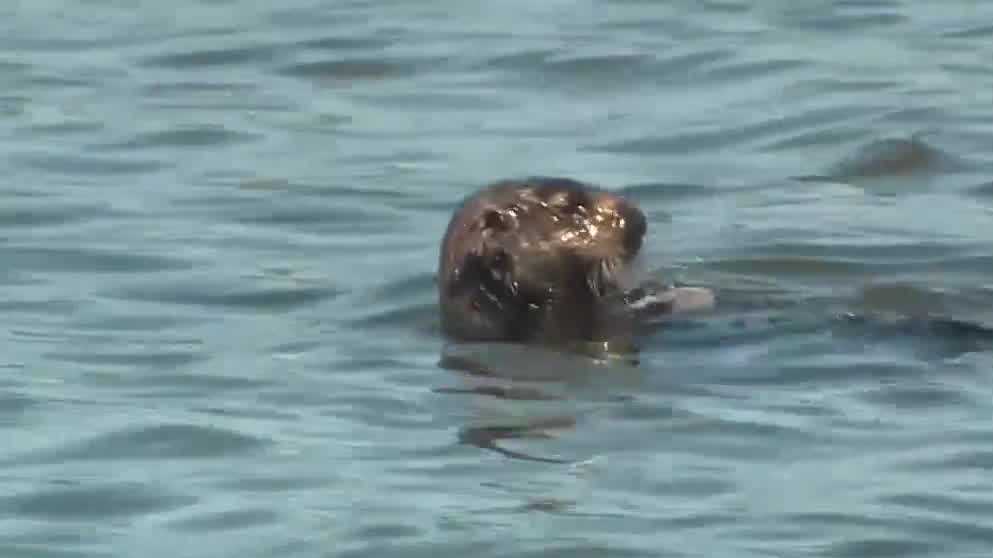It’s Sea Otter Awareness Week, so KSBW wanted to look at how the Central Coast’s sea otter population is doing. According to the Monterey Bay Aquarium, southern sea otters are considered endangered, but our local otter population appears to be stable and healthy. “We’re really privileged to have a really healthy population of sea otters right along the Monterey Peninsula,” said Monterey Bay Aquarium Sea Otter Program Manager Jessica Fujii. The aquarium does population counts about every three months. So far, they’ve been averaging about 500 sea otters across the Monterey Bay coastline. “We look for them as we walk along the path, we’re always looking for them because they’re so cute, tangled up in the seaweed,” said Santa Cruz resident Roxy Kumagai. While the sea otter population here is looking fairly stable, there are still active threats the animals are facing. “The biggest issue we’re seeing is that the source of mortality for sea otters is due to shark bite,” said Fujii. “This is an unfortunate case where they’re not an actual source of food for white sharks, but they’re still getting bitten and end up dying from those wounds.”Other dangers include diseases from harmful algae blooms, such as domoic acid poisoning. While the aquarium said human-caused factors are less of an issue, they still ask the public to exercise caution and give the animals space, especially if you’re out on the water. “The best rule of thumb is if they’re looking at you, you’re too close,” said Fujii.
MONTEREY, Calif. —
It’s Sea Otter Awareness Week, so KSBW wanted to look at how the Central Coast’s sea otter population is doing.
According to the Monterey Bay Aquarium, southern sea otters are considered endangered, but our local otter population appears to be stable and healthy.
“We’re really privileged to have a really healthy population of sea otters right along the Monterey Peninsula,” said Monterey Bay Aquarium Sea Otter Program Manager Jessica Fujii.
The aquarium does population counts about every three months. So far, they’ve been averaging about 500 sea otters across the Monterey Bay coastline.
“We look for them as we walk along the path, we’re always looking for them because they’re so cute, tangled up in the seaweed,” said Santa Cruz resident Roxy Kumagai.
While the sea otter population here is looking fairly stable, there are still active threats the animals are facing.
“The biggest issue we’re seeing is that the source of mortality for sea otters is due to shark bite,” said Fujii. “This is an unfortunate case where they’re not an actual source of food for white sharks, but they’re still getting bitten and end up dying from those wounds.”
Other dangers include diseases from harmful algae blooms, such as domoic acid poisoning.
While the aquarium said human-caused factors are less of an issue, they still ask the public to exercise caution and give the animals space, especially if you’re out on the water.
“The best rule of thumb is if they’re looking at you, you’re too close,” said Fujii.

